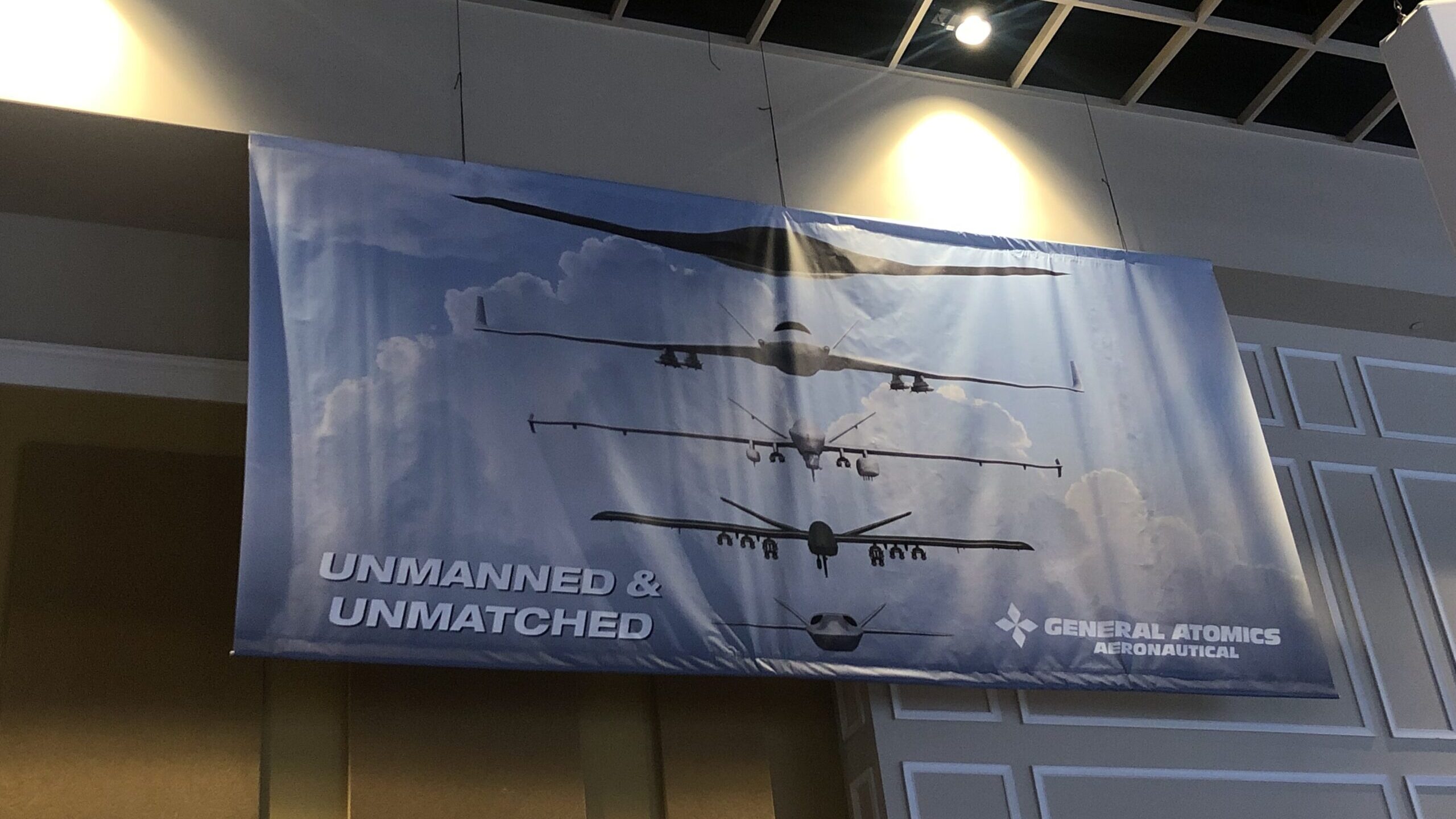
AFA AIR WARFARE SYMPOSIUM: General Atomics has surreptitiously revealed its entrant for the Air Force’s Off-Board Sensing Station program, Breaking Defense has learned.
A source with knowledge of the program told Breaking Defense that the company plans to officially debut the new drone, named Gambit, on Thursday morning, as the Air Force Association’s Air Warfare Symposium starts in Orlando, Fla.
However, those attending the conference’s reception — happening tonight — will be able to spot concept art of the new drone above the doorway the exhibit hall, as well as at the company’s booth.
A spokesman for General Atomics declined to comment on the concept art.

Under the OBSS program, the Air Force is hoping to field an unmanned aircraft with high levels of autonomy and an exquisite sensor suite, that can fly beyond the line of sight of fourth and fifth generation fighter jets and send them targeting data and other information about potential threats.
The Air Force Research Laboratory awarded General Atomics a $17.8 million contract last fall to develop a prototype OBSS aircraft. The company is going head to head against Kratos, which won its own $17.7 million contract at the time.
The Air Force has publicly said very little about the OBSS program, except that it expects the system to be attritable — that is, inexpensive enough that its loss can be tolerated in combat and that it would have a “limited life in terms of years, not decades, with no depot maintenance and limited field maintenance consideration,” according to an AFRL statement of objectives for the program.
During an interview with Breaking Defense at Dubai Airshow last November, General Atomics president David Alexander said that the company’s OBSS platform would look significantly different from its current line up of unmanned systems, which include platforms like the MQ-9 Reaper and MQ-1C Gray Eagle.
The new system would look more like a “miniature fighter jet,” Alexander said then, but the “big challenge” for OBSS would be “getting the cost out of the production of the platform” while still building a fast pilotless aircraft still survivable enough to operate in front of fighter jets in contested environments.